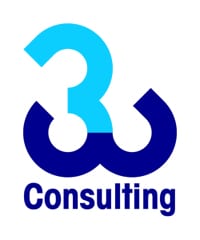Welcome to our comprehensive beginner’s guide, designed to help you create content that increases your rank, traffic and leads – in both quality and quantity.
This guide simplifies writing SEO-friendly content into concepts that you can easily apply, allowing you to generate more ‘targeted’ organic traffic that is interested in your products and services – leading to higher conversion rates.
Attract Your Target Audience
Attracting your target audience is the first goal of SEO-focused content creation, and it begins with an effective content strategy. However, it’s not just about getting your audience to visit the site, but also retaining them through the effective use of CTA’s (calls to action). These aim to have your traffic:
- Sign up to your email list
- Follow you on social
- Click through to your product and service pages
- Encourage purchase behaviour
- Returning to your website to buy again as a loyal customer
The second goal when creating content for your website is to turn views into actions – also known as “converting” your traffic.
Quality content creation comes from having the key elements in place to increase the piece’s chances of success. Developing original, relevant, and engaging content that considers optimal keyword usage, combined with imagery, video and variation in formatting, should be the primary aim of building a successful content marketing campaign.
Creating content that resonates with your target audience starts with understanding your audience’s identity, their preferences, and how they interact with the content. Knowing your target audience can dramatically improve your ability to write compelling copy when starting out. It’s not only about the quality of the content but also about how it is presented and promoted.
If you already have a following on social media, look at the profiles of the people who follow you to get an idea of their hobbies, what they talk about, and the types of content they share. The same process can be applied to a close competitor’s social following if you need to get one of your own. Make a list of what you observe; these will be important to refer back to when writing. Reflecting their interests and hobbies creatively in your content is one crucial aspect that will help to build a solid connection.
In terms of structure, the most crucial component is the headline. This is the first thing people read in the search engines, on social media, in email and in the article itself. Researching words and phrases, also known as ‘keyword research’, which are terms your target audience regularly uses when talking about and researching your industry, should be used as the foundational structure of the headline. A well-researched headline will make it relevant to the audience’s intent when searching for information on the web, increasing the chances of them clicking the link to read more.
The same concepts apply in SEO content creation when writing body content; this also calls for the effective use of relevant keywords. When you write, incorporate keywords naturally within the text to increase visibility. However, be mindful when you insert these keywords, as overuse can negatively impact your SEO performance. Striking the right balance is key. When used effectively, these keywords can significantly improve the performance of your website content. Using them in headings, sub-headings, and body content can enhance your website’s appeal. Using SEO tools, outlined later in this article, can significantly assist you here.
An essential SEO content strategy involves regularly updating and fine-tuning your content. This ensures your content remains relevant, engaging, and aligned with the latest SEO guidelines. Content creation is a continuous process that requires consistent effort and improvement when used to generate leads for your business.
Attracting your target audience requires patience, research, and a well-crafted strategy. Continuous research into competitors, market trends and the products and services you provide all inform which topics to focus on and the specific steps required to draw the optimal benefit from the content, regarding new followers, leads and sales.
Strategy, planning, and writing content that communicates effectively with your target audience
Generate More Sales Through SEO Content Strategy

3W Consulting can help you create a content strategy that drives sales. These sales can be driven directly for product-based businesses, such as e-commerce, or indirectly via lead generation, for service-based businesses.
By integrating keyword analysis, competitor research, and understanding consumer behaviour, creating content can be used as a business tool that effectively captures leads and influences purchasing decisions.
However, once this content has increased visibility and traffic for your website, optimising this with effective internal links, that use relevant keywords that have the highest chance to produce a click-through to a sales page or a contact form, is a process involving the use of analytical platforms to guide effective decision making.
Our agency can offer guidance here with our access to multiple specialist tools. Let us know if you need our assistance.
Improving Online Revenue with Sales Focused Keywords
Using content to increase sales volume directly comes from selecting the correct keywords for the job.
Understanding the intent behind a user’s search is crucial for categorising keywords that lead to sales versus those that bring in traffic. Here’s a brief overview:
Keywords that lead to sales (High Conversion Potential):
Transactional Keywords: These are used when a user is ready to convert or purchase. They often include specific terms like “buy,” “discount,” “deal,” “coupon,” or “free shipping.” For example, “buy wireless headphones” or “discounted organic makeup.”
Product-Specific Keywords: These refer to very specific products or services and often include brand names or exact product types. For example, “iPhone 12 Pro Max” or “Blue Bottle Coffee subscription.” Users searching with these terms have typically done their research and are further along in the buying cycle.
Local Keywords: These are relevant for local businesses or brick-and-mortar stores. Users searching for services “near me” or specifying a location often have a high intent to purchase. For example, “Italian restaurant in downtown Chicago” or “emergency plumber near me.”
Keywords that lead to traffic (Lower Conversion Potential):
Informational Keywords: These are used by searchers looking for information and are not necessarily ready to purchase. These queries often start with “how to,” “what is,” or “benefits of.” For example, “how to fix a leaking faucet” or “what is the best smartphone.” These terms are valuable for brand awareness and authority building but less for immediate sales.
Broad or Generic Keywords: These are non-specific keywords that can bring in massive amounts of traffic but with lower conversion rates because they don’t indicate purchase intent. For example, “smartphones” or “shoes.” These terms are very competitive and vague.
By focusing on the intent behind keywords, SEO experts can optimise web content to attract users who are more likely to convert, thereby making more efficient use of resources and improving return on investment. It’s essential to balance the strategy to capture some informational and awareness traffic, as today’s users could be your future customers.
Content Tools That Help: From Editing to Keyword Research
- Grammarly: An editing tool that checks for over 250 types of spelling, grammar, and punctuation errors.
- Hemingway Editor: A tool used to analyse your content and make it “bold and clear” by highlighting lengthy, complex sentences and common errors.
- Page Optimizer Pro: This tool allows you to edit content, within the context of the keywords you are seeking to capture, and taking into account what the competition are doing to secure the #1 spot in Google and Bing.
- Google Docs: An online tool that includes editing and styling tools to format your text and grammar and spell check capabilities.
- Microsoft Word: A word processing software that features advanced editing tools and a built-in dictionary for managing grammar and spelling.
- Adobe InDesign: A layout and page design software used to create and edit documents and publications.
- Yoast SEO: A WordPress plugin that helps optimise SEO, readability analysis, and check keyword presence.
- SEMrush: An SEO tool that can do keyword research, track keyword strategy used by your competition, run an SEO audit of your blog, look for back-linking opportunities and lots more.
- Google Keyword Planner: A free Google Ads tool for new or experienced advertisers that’s like a workshop for building new Search Network campaigns or expanding existing ones.
- Ahrefs’ Keyword Generator: It pulls the top 100 keyword ideas for any seed keyword or phrase from their database of over ten billion keywords across 170+ countries.
- Keyword Surfer: A free Chrome Extension for keyword research, including keyword volume and related terms.
- Moz Keyword Explorer: It offers accurate monthly search volume data, an idea of how difficult it will be to rank for your keyword, an estimated click-through rate, and a score representing your potential to rank.
The Importance of SEO Writing in Growing Your Business

In the digital landscape, one cannot underscore the importance of SEO writing in growing your business. SEO, an abbreviation for Search Engine Optimization, has proven critical in enhancing online visibility, allowing businesses to reach their target audience more effectively. This is made possible as SEO focuses on including specific keywords in your content, such as ‘writing’ and ‘business,’ enabling search engines to crawl and index your page based on relevance.
In addition to improving your website’s visibility, SEO writing also plays an integral role in growing your business. When your content is expertly crafted and incorporates the necessary SEO strategies, your website can generate significant organic traffic. This traffic can then be converted into leads, effectively leading to sales growth. Here at 3W Consulting, we cannot stress enough the importance of this critical digital marketing strategy.
However, the impact of SEO goes beyond traffic generation and conversion. SEO writing also sets the foundation for building trust and credibility with your audience. High-quality content that provides value and addresses the needs of users can foster long-term relationships with potential clients.
But despite these benefits, mastering the art of SEO writing is no easy feat. It involves consistent analysis, adjustment, and adherence to the ever-changing search engine algorithms. It is where the power of SEO and the craft of writing come together to create a brand message that resonates with both your audience and search engines. This formula is the lifeline of your online presence and a key player in growing your business.
To conclude, understanding the importance of SEO and deploying it strategically in your writing can propel your business forward. It is not merely a tool to improve search engine rankings, but it is an essential practice that can scale your business in the digital space. Always remember, in the world of online business, SEO writing is not an option; it is a necessity.
Creating Website Content that Matches Your Audience’s Level of Literacy
Literacy level is not just about a person’s ability to read and write; it also involves their understanding of complex ideas and interpreting them into usable ideas, which varies among your audience.
Comprehension is also device-specific. A person reading via a mobile device is more likely to skim read than when on a tablet or desktop – leading to lower levels of comprehension on smaller screens. Formatting sentences into smaller chunks with a single clear point per paragraph is useful to keep mobile users engaged with your content for longer.
Each portion of your audience has distinct literacy requirements. Recognising these differences allows you to segment and customise your content, thus maximising engagement and readability. The better your content matches your audience’s literacy level, the more likely they will engage and eventually convert, ultimately generating more sales through a robust web content strategy.
The Five W’s and H of Content Marketing Strategy
As with any strategy, content marketing is not a one-size-fits-all approach. It needs to be developed, keeping in mind your specific business requirements, target audience, and the long-term objectives of your venture.
For those unfamiliar, the Five W’s and H concept represents ‘Who’, ‘What’, ‘When’, ‘Where’, ‘Why’, and ‘How’. These questions help to maximise the value of your content. From recognising the ‘Who’ that establishes your target audience to the ‘What’ that implies the kind of content they prefer, these elements greatly influence the impact of your marketing strategy.
Addressing the ‘When’ and ‘Where’ are also essential. Identifying the most opportune time to post your content and ‘Where’ to share it for maximum visibility can significantly impact your content’s performance.
The last two aspects, ‘Why’ and ‘How’, identify the purpose behind your content strategy and the methods to achieve your objectives effectively.
You might question the necessity of getting so involved with these questions in the content creation process. Still, it forms the backbone of any successful content strategy and saves time by avoiding creating media that does not resonate with your specific audience and their needs. By aligning the Five W’s and H with your overall business and marketing goals, you can create content that not only increases traffic and time-on-page, but also converts.
The Five W’s and H of content marketing strategy isn’t just a methodology; it’s a comprehensive approach towards creating impactful content that leads to tangible results. It’s not just about producing content; it’s about delivering content that matters to the people that matter, at the time and place that works for them, with a central theme that meets their need for information and your need for a sale.
The Significance of Voice and Tone in Content Writing

The tone of voice in content writing refers to a brand or individual’s specific writing style and expression, encompassing aspects of its personality and values. It is a consistent communication that reinforces a brand’s identity, helping it stand out in a competitive market.
When properly implemented, the tone of voice becomes recognisable. It connects with your audience, making your content more engaging and persuasive.
In terms of SEO content strategy, a well-defined tone of voice is vital for several reasons:
- Audience Retention: A consistent and relatable tone of voice helps keep the audience engaged. Readers are more likely to return to a source that communicates in a manner that resonates with them, creating a sense of familiarity and trust. This sustained engagement eventually leads to higher traffic and an increased potential for conversions.
- Brand Differentiation: In a saturated market, businesses must stand out. A unique tone of voice distinguishes your content from others, even when numerous competitors discuss the same topics or sell similar products. This differentiation is vital in search engine rankings, where unique content is valued.
- Enhanced Communication: The tone of voice can clarify your message and make complex information more digestible for readers. A clear, direct tone can often be more effective, ensuring that key points are delivered succinctly. This clarity can aid in maintaining lower bounce rates, encouraging visitors to stay on your site longer.
- Link-Building Opportunities: High-quality, engaging content is more likely to attract backlinks from reputable websites. A distinctive tone of voice can enhance the quality of your content, making it more appealing for others to link to. This strategy improves your site’s authority and increases traffic through improved search engine visibility.
- Conversion Rate Optimisation: When users search for information, they are more inclined to trust authoritative and knowledgeable sources. A confident, expert tone of voice can enhance these perceptions. If your content reassures readers, they are more likely to convert into customers, trusting your brand over others.
- Social Sharing: Well-written content that maintains a consistent tone of voice is more likely to be shared across social media platforms. This increased sharing amplifies reach, potentially attracting more visitors to your site and improving your search engine rankings through enhanced engagement and visibility.
The delivery of content—how you speak to your audience—matters significantly. You create a cohesive, trustworthy brand image by establishing a tone of voice that resonates with your target demographic and maintaining it across all channels. This strategy forms the foundation for businesses to build a loyal readership, enhance their online presence, and ensure a steady influx of traffic and higher conversion rates.
Now that you have the knowledge, all that is left is to put it all into action. If you are looking for an agency with solidified steps to achieve everything outlined above for you, please get in touch. All the best!

